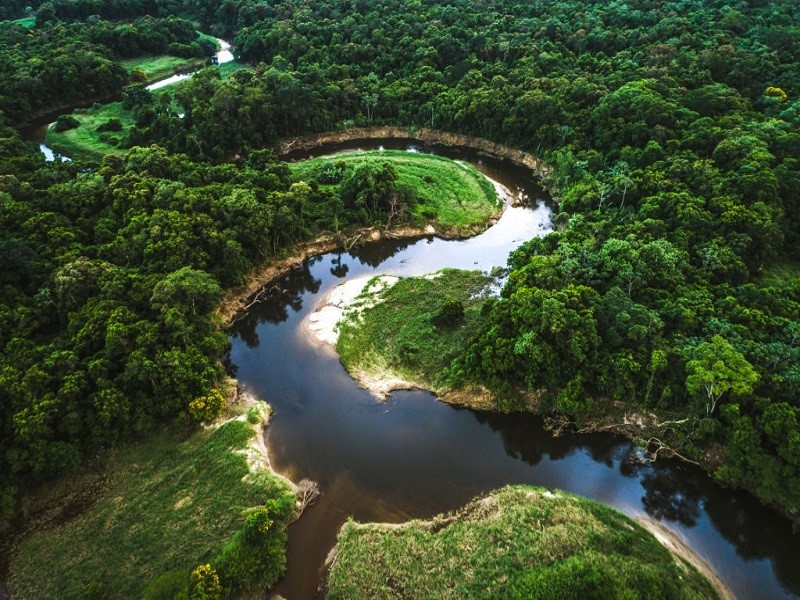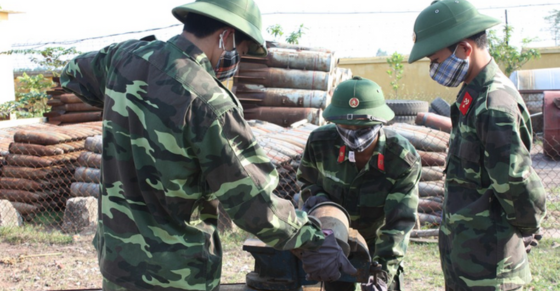Approval of the Scheme for developing multi-use values of forest ecosystems in Vietnam till 2030, with a vision to 2050
What are the contents of the Scheme for developing multi-use values of forest ecosystems in Vietnam till 2030, with a vision to 2050?– Lan Huong (Da Nang)

Approval of the Scheme for developing multi-use values of forest ecosystems in Vietnam till 2030, with a vision to 2050 (Internet image)
Regarding this issue, LawNet would like to answer as follows:
On February 29, 2024, the Prime Minister of Vietnam issued Decision 208/QD-TTg approving the Project to develop multi-use values of forest ecosystems until 2030, with a vision to 2050.
Approval of the Scheme for developing multi-use values of forest ecosystems in Vietnam till 2030, with a vision to 2050
Tasks in the Project for developing multi-use values of forest ecosystems to 2030, with a vision to 2050 include:
(1) Developing legal sources of wood materials and increase value for the wood processing industry
- Form a number of concentrated material forest planting areas; Prioritize the development of large timber forests, converting from small timber plantations to large timber plantations in key regions such as the Northeast, North Central, South Central and Central Highlands; Apply science and technology to production by selecting, creating, and controlling the quality of seed sources; Implement intensive technical measures to increase the productivity and quality of planted forests; linking raw material production areas with concentrated commodity processing for a number of strong products; build brands, create competitive advantages in the international market; and meet domestic market needs.
- Gradually increase the proportion of legal wood material supply from domestically planted forests for the wood and forest products processing industry; Planted forest wood is granted a sustainable forest management certificate or a planting area code in accordance with the requirements of the domestic and international markets.
- Develop fine processing and deep processing technology to increase the added value of wood products; Utilizing waste by-products in wood processing to produce products for consumption and export; Gradually form a circular economy in the forestry production industry; Gradually reduce the proportion of raw processed products, such as wood chip production, for export; Encourage the production and use of wood products from domestically grown forests.
(2) Developing non-timber forest products and medicinal herbs
- Investigate, evaluate, and zone for conservation and development of non-timber forest products and medicinal plants under the forest canopy; Focus on mastering information about rare species with high economic value: distribution area, species, area, reserves; From there, propose a plan for conservation, exploitation, and sustainable use according to the potential and strengths of each product, each ecological region, and promote the indigenous knowledge of the community and local people.
- Research, test, select, create, announce, and circulate varieties and species of non-timber forest products and medicinal plants with high productivity and quality, resistance to pests and diseases, and suitability to the characteristics and natural conditions of each ecological region. Develop and complete processes and technical instructions for seed production, cultivation, and processing of non-timber forest products and medicinal plants under the forest canopy, meeting raw material standards for production associated with stable forest development and biodiversity conservation in forest ecosystems.
- Form concentrated production areas for non-timber forest products and medicinal materials suitable to climate and soil conditions, suitable to the ecological requirements of each species, Prioritizing a number of tree species that currently have a large area and high economic value on forestry land or under the forest canopy, such as: Cinnamon, anise, lemongrass, and yellow camellia growing areas in the Northeast, North Central, and Central Coast provinces; Vietnamese ginseng growing areas in the provinces of Quang Nam, Kon Tum, Gia Lai, Lam Dong, Thua Thien Hue, Nghe An, Lao Cai, Lai Chau, and Dien Bien; bamboo and dendrocalamus barbatus growing areas in the Northwest and North Central provinces; rattan growing areas in the North and South Central regions. Issue planting area codes for raw material areas in eligible areas to ensure traceability.
- Develop commercial product processing facilities and factories associated with concentrated raw material production areas along the value chain to meet the standards and requirements of domestic and international markets; product diversification; building brands; developing handicraft products associated with forest materials; developing OCOP products on medicinal materials; and developing products suitable to the characteristics of the national cultural identity of ethnic minorities.
(3) Developing combined forms of agriculture, forestry and fishery
- Summarize, evaluate, and combine economic development models of agriculture, forestry, and fishery, such as: forest garden and forest camp models; cultivating and developing medicinal plants, multi-purpose plants, livestock, and aquaculture under a forest canopy;... to share experiences, knowledge, document, develop processes, standards, regulations, and technical instructions to disseminate and replicate successful and effective models.
- Select high-value, multi-purpose crop and livestock species suitable to local conditions and market needs and tastes. Apply effective farming methods and manage the quality of crops, livestock, aquatic products, etc. combined under the forest canopy to optimize land use efficiency; Production and trade of agricultural, forestry, and fishery products do not cause deforestation and affect the natural environment and biodiversity of forest ecosystems.
- Organize sustainable and effective cooperation and production links between businesses, organizations, households, individuals, and communities; promote responsibility and encourage participation in forest management and community benefit sharing; and ensure harmony in the legitimate rights and interests of participating parties.
(4) Developing forest environmental services
- Develop forest environmental services, diversify, and expand revenue sources from various types of forest environmental services in accordance with the law, especially forest carbon absorption and storage services; Reduce greenhouse gas emissions by limiting deforestation and forest degradation, implementing sustainable forest management, and promoting green growth.
- Research and institutionalize regulations on applying rates for forest environmental services that are close to the real value that forests bring, in accordance with economic development practices, gradually increase income, and stabilize the lives of people directly involved in forest management, protection, and development.
- Strengthen management and guidance to improve the efficiency of using revenue from forest environmental services to invest in the protection and sustainable development of forest resources; ensure equitable sharing of benefits with local communities.
(5) Developing eco-tourism, resorts, and entertainment
- Guide forest owners to develop and organize the implementation of eco-tourism, resort, and entertainment projects; assess impacts, take strict control measures, and minimize negative impacts of eco-tourism, resort, and entertainment activities.
for forest management, nature conservation, biodiversity of forest ecosystems, and socio-economic development. Research on promoting and supporting forest owners to self-organize ecotourism, resort, and entertainment activities according to regulations.
- Strengthen cooperation between forest owners and local communities; encourage communities to participate in the process of planning, managing, and providing tourism products and services; preserve and promote indigenous knowledge and cultural traditions; and ensure equitable sharing of benefits with local communities.
- Develop eco-tourism models associated with agricultural, rural, and community-based tourism for ethnic minorities, mountainous people, and people living in and near forests.
- Develop unique and unique tourism types and products associated with the natural landscape value of the forest ecosystem, demonstrating regional and inter-regional connectivity, and creating products, activities, and tourism brands associated with local traditional culture and geographical region.
- Develop promotion and marketing strategies and media channels to introduce and provide feedback on ecotourism and rural tourism activities; Use social networks and websites and organize events (seminars, conferences, fairs, photo exhibitions, etc.) to bring information to domestic and international tourists.
- Attract resources in society to participate in sustainable development of eco-tourism, relaxation, and entertainment in forest ecosystems; support job creation and improve livelihoods through the use of local labor. It guides organizations and individuals organizing tourism activities in adjacent areas and regions or areas bordering organizations organizing eco-tourism, resorts, and entertainment areas in forest ecosystems.
More details can be found in Decision 208/QD-TTg, taking effect on February 29, 2024.
- Key word:
- forest ecosystems
- in Vietnam
- Number of deputy directors of departments in Vietnam in accordance with Decree 45/2025/ND-CP
- Cases ineligible for pardon in Vietnam in 2025
- Decree 50/2025 amending Decree 151/2017 on the management of public assets in Vietnam
- Circular 07/2025 amending Circular 02/2022 on the Law on Environmental Protection in Vietnam
- Adjustment to the organizational structure of the Ministry of Health of Vietnam: Certain agencies are no longer listed in the organizational structure
- Vietnam aims to welcome 22-23 million international tourists in Vietnam in 2025
-

- Emergency response and search and rescue organizations ...
- 10:29, 11/09/2024
-

- Handling of the acceptance results of ministerial ...
- 09:30, 11/09/2024
-

- Guidance on unexploded ordnance investigation ...
- 18:30, 09/09/2024
-

- Sources of the National database on construction ...
- 16:37, 09/09/2024
-

- General regulations on the implementation of administrative ...
- 11:30, 09/09/2024
-

- Notable new policies of Vietnam effective as of ...
- 16:26, 11/04/2025
-
.Medium.png)
- Notable documents of Vietnam in the previous week ...
- 16:21, 11/04/2025
-
.Medium.png)
- Notable documents of Vietnam in the previous week ...
- 16:11, 02/04/2025
-
.Medium.png)
- Notable new policies of Vietnam to be effective ...
- 16:04, 02/04/2025
-
.Medium.png)
- Notable new policies of Vietnam effective from ...
- 14:51, 21/03/2025
 (1).png)
 Article table of contents
Article table of contents
